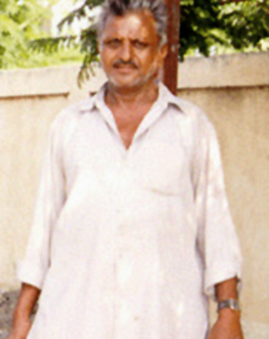 Beldar Caste
Beldar Caste
Description:
The Beldar caste, historically a nomadic community from Northern India, is known for their occupation as navvies and their involvement in construction work. They are at present, a scheduled caste in northern part of India and are still engaged in their traditional occupation of navvies.
The Beldar caste, historically a nomadic community originating from Northern India, has found its place in various parts of the country. The term "Beldar" refers to individuals who work as navvies, primarily engaged in construction activities. This caste is known for their unique characteristics, historical background, occupational pursuits, geographical distribution, and cultural practices which reflect their significant contribution to the Indian society.
Origin of Beldar Caste
The Beldar caste traces its roots back to Northern India, particularly in the provinces of Uttar Pradesh and Maharashtra. They are linguistically associated with the Hindi dialect, and their cultural heritage is deeply intertwined with the regions they inhabit. The Beldar community shares ancestral ties with the Odh and Kewat communities, who refer to themselves as Odhs, further enhancing their historical lineage.
The term "Beldar" itself is derived from the combination of "bel," signifying a digging instrument, and "dar," which refers to the individual who handles it. Originally associated with agricultural activities involving soil digging and transportation, the Beldar community has also been recognized for their role in brick-making and clearing agricultural land. Although primarily concentrated in Northern India, a smaller population can also be found in regions such as West Bengal, Bangladesh, and Nepal.
Occupational and Lifestyle of Beldar Caste
The Beldar caste primarily engages in construction work, with entire families actively participating in this occupation. This dynamic involvement often leads to their nomadic lifestyle, as they migrate from one construction site to another in search of employment opportunities. A significant number of Beldars also engage in the trade of fruits and vegetables, showcasing their adaptability to various livelihood options.
While construction work remains their predominant occupation, a minority of Beldars have diversified into animal husbandry, small business ventures, industrial work, and unskilled labor. It is worth noting that some members of the Beldar community are involved in the production and sale of alcoholic beverages.
Society and Culture of Beldar Caste
The Beldar community cherishes its distinct cultural practices and holds a rich folklore tradition. The community has developed its own folk songs and folk tales, preserving their heritage for future generations. In Maharashtra, the Beldar caste is found in various districts and retains its language, Beldari, for internal communication, while conversing in Marathi with outsiders.
Caste divisions within the Beldar community exist in the form of sub-castes. The community`s social structure is strictly endogamous, with exogamous clans forming the basis of marital alliances. Prominent clans among the Beldar include Chapula, Narora, Davawar, Kharola, Jailwar, Faatara, Horwar, Chhapawar, Tuse, Pannewar, Mahore, Basniwar, Bahr, Jajure, Gorala, and Udainwar. These sub-castes share similar cultural and occupational characteristics, making it challenging to distinguish them from the larger Beldar caste.
Challenges faced by Beldar Caste
The Beldar caste faces societal and economic challenges, predominantly stemming from the perception of being part of the lower caste stratum. This perception often leads to social discrimination and limited access to opportunities for social and economic mobility.
The Beldar caste`s history and cultural heritage provide evidence of its significant contributions to Indian society. Legends claim their descent from Prithviraj Chauhan, further highlighting their ancestral connections. Additionally, the Beldar community shares similarities with other occupational castes like the Odh community, known as construction workers in Western India, and the Lonia community, suggesting a common lineage.
In certain regions, such as Hoshangabad District, there are instances of Muslim Beldars, indicating religious diversity within the community. The Beldars of Saugor claim a historical association with salt refining, showcasing the diverse occupational pursuits that have been practiced by different sub-groups within the caste.
Cultural practices play a vital role in the Beldar community. Music and dance form an integral part of their social and celebratory occasions. Traditional drums and fireworks accompany their wedding processions, further enhancing the festive atmosphere. The Beldar community follows indigenous customs that hold significant importance in their daily lives, maintaining a strong connection to their cultural roots.
The Beldar caste, with its historical origins in Northern India, represents a nomadic occupational community that has made significant contributions to Indian society. Engaged primarily in construction work and associated activities, the Beldar community has played a crucial role in shaping the physical landscape of various regions. Their involvement in agriculture, brick-making, and the trade of fruits and vegetables demonstrates their adaptability and versatility.
Preserving their rich cultural heritage through folk songs, folk tales, and indigenous customs, the Beldar community has maintained a strong sense of identity. Empowering marginalized communities like the Beldar through social reforms, access to education, and economic opportunities can help in creating a more equitable and inclusive society for all.









